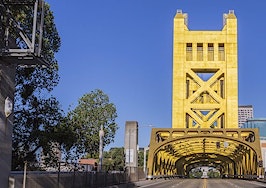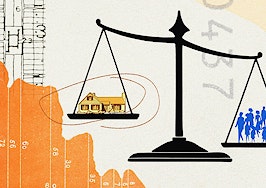- There are 75.4 million millennials compared to 74.9 million baby boomers across the U.S, according to U.S. Census data.
- When millennials can’t afford the urban core, they opt for areas nearby with solid opportunities and accessible public transit.
- Once overlooked, Downtown Los Angeles has undergone a transformation due to heightened demand for the urban lifestyle.
Millennials (adults between 18 and 36 years old) are now the nation’s largest generation next to baby boomers. There are 75.4 million millennials compared to 74.9 million baby boomers across the country, according to U.S. Census population estimates reported in a recent Avison Young urbanization report.
The Canadian-based commercial real estate company outlined how millennials have re-shaped cities as desires have shifted. The metropolitan lifestyle, filled with public transit, restaurants, culture and retail is enticing to many young professionals.
However, the high costs of urban living in areas like Manhattan has caused a sprawl to the outskirts with comparable amenities. When millennials can’t afford the urban core, they opt for areas nearby with solid opportunities and accessible public transit.
Now, “urban-burbs” are sparking up, boasting fewer residents and a family-friendly atmosphere, but similar accommodations offered in the city core.
In many ways, these urban-burbs are the new options for millennials who prefer a calmer, yet accessible and inclusive environment. It’s the best of both worlds, fulfilling the need to flee high housing costs closer to the big city.
As of 2010, more than 80 percent of the U.S. population live in urban areas, according to U.S. Census data. In the 20s, before the Great Depression, about half of the population lived in metropolitan areas, and that rate reached 66 percent 40 years later.
Although work-from-home jobs have increased drastically from heightened technological innovations, millennials still gravitate toward the urban core, where job opportunities are abundant. Aside from the need to make good money and maintain a thriving social life, fewer opportunities for homeownership in the suburbs and waiting to settle down keeps cities more in-demand than ever before.
Millennial influence on metros across the U.S.

Avison Young Topical Report
In Austin, Avison Young writes, millennials opt for the Central Business District, where housing and transportation are readily available. Rentals are more prevalent compared to downtown, where rentals are pricier.
New York millennials are opting for suburbs such as Hoboken, Brooklyn and Queens, which hold the culture and desirability at a lesser monthly burden, the report says. In Hoboken, the average two-bedroom rent runs for $2,900 per month. The average two-bedroom in Manhattan’s Chelsea neighborhood costs $5,000 per month in a non-doorman building.
Silicon Valley, the hub of the tech boom, takes a backseat to San Francisco in millennials’ minds, according to the report. More companies are now moving to the City by the Bay instead of the traditional tech counties.
Downtown Los Angeles, once overlooked, has undergone a transformation due to heightened demand for the urban lifestyle.
For the past few years, Washington D.C. proved to be a massive attraction for the young generation. As of 2014, the median age was 33.8 years old, with 21 percent of the population between the ages of 20 and 29, according to Census data.
It’s difficult to say whether urbanization is motivated by a younger person’s current lifestyle needs, or if these trends are set to last. In 2022, when the median-aged millennial is 30, the state of the suburbs will be easier to determine.
Although millennials without bachelor’s degrees are less likely to live in the city or urban core, they crave a similar experience.













